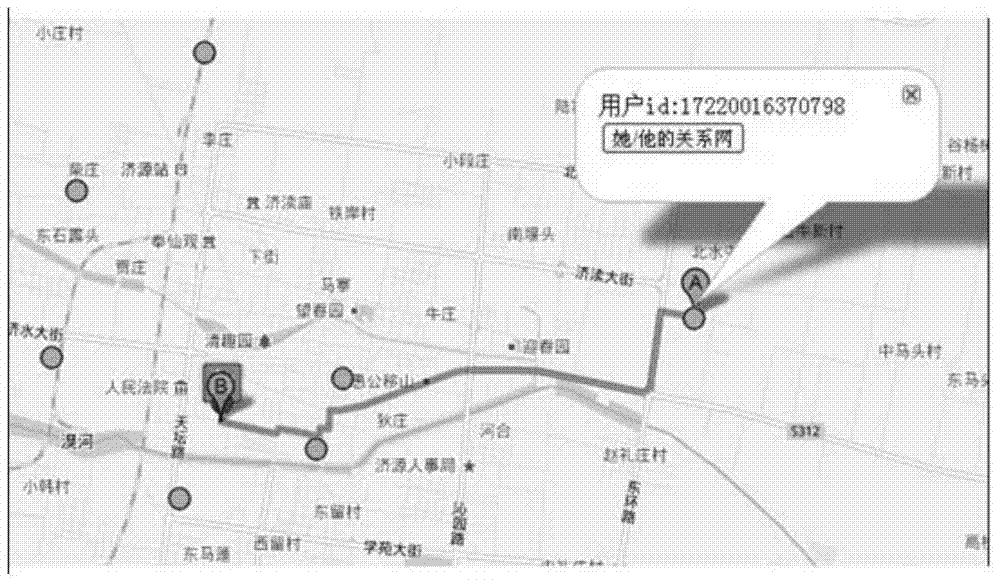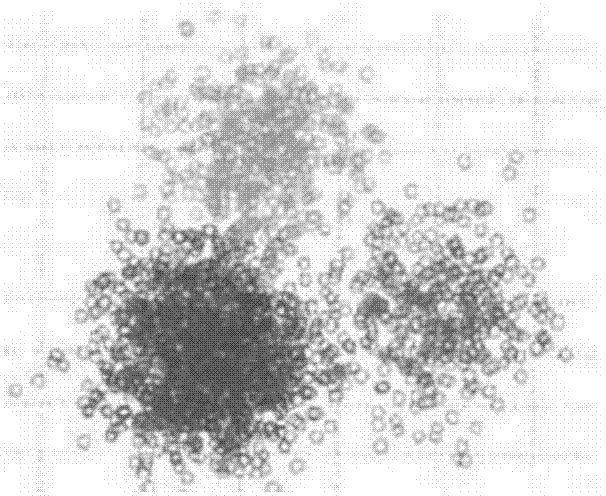Method for conducting public transportation planning by utilizing mobile communication data mining
A data mining and mobile communication technology, applied in the field of mobile communication, can solve the problems of data information lag, difficult to guarantee accuracy, long investigation cycle, etc.
- Summary
- Abstract
- Description
- Claims
- Application Information
AI Technical Summary
Problems solved by technology
Method used
Image
Examples
Embodiment 1
[0077] Embodiment 1, urban bus route planning.
[0078] According to the user's daily parking point analysis (staying in different location areas for different time periods), describe the user's daily life trajectory (see figure 2 ). Analyze the characteristics (repetition rate, dispersion) of all user life trajectories in the target area (such as cities, districts and counties, etc.), and obtain the densely populated areas and the direction of the flow of people in different time periods. (See image 3 ) Plan the bus routes according to the distribution of the flow of people, and set the bus stops at the points with dense flow of people. The specific implementation steps are as follows:
[0079] 201: Obtain the mobile signaling data of the user terminal within the statistical period in the statistical area from the operator server, and obtain the location update information of the user terminal according to the mobile signaling data of the user terminal;
[0080] The sou...
Embodiment 2
[0105] Embodiment 2, bus route optimization.
[0106] Bus companies should add routes and increase frequency in densely populated areas. The addition of lines allows passengers to take buses bound for different locations at the same station, which not only facilitates passengers, but also brings more tourists to the buses. The specific implementation steps are as follows:
[0107] 301: Obtain mobile signaling data of the user terminal within the statistical period in the statistical area from the operator server, and obtain location update information of the user terminal according to the mobile signaling data of the user terminal;
[0108] The sources of mobile signaling data collected include but are not limited to mobile signaling data, mobile phone GPS positioning information, etc.
[0109] Obtain the mobile signaling update data of the city (statistical area can be set) in the first half of the year (statistical period can be set) from the operator, and obtain user loca...
Embodiment 3
[0132] Embodiment three, bus scheduling optimization.
[0133] Count the time passengers stay at the station, that is, the waiting time. For stations with a large flow of people and a long stay time, it is necessary to increase the bus frequency. Increasing the number of shifts can greatly shorten the waiting time of passengers, which can not only save time for passengers, but also improve the competitiveness of buses. The starting model can also be adjusted according to the characteristics of the user group. The specific implementation steps are as follows:
[0134] 401: Obtain mobile signaling data of the user terminal within the statistical period in the statistical area from the operator server, and obtain location update information of the user terminal according to the mobile signaling data of the user terminal;
[0135] The sources of mobile signaling data collected include but are not limited to mobile signaling data, mobile phone GPS positioning information, etc.
...
PUM
 Login to View More
Login to View More Abstract
Description
Claims
Application Information
 Login to View More
Login to View More - R&D
- Intellectual Property
- Life Sciences
- Materials
- Tech Scout
- Unparalleled Data Quality
- Higher Quality Content
- 60% Fewer Hallucinations
Browse by: Latest US Patents, China's latest patents, Technical Efficacy Thesaurus, Application Domain, Technology Topic, Popular Technical Reports.
© 2025 PatSnap. All rights reserved.Legal|Privacy policy|Modern Slavery Act Transparency Statement|Sitemap|About US| Contact US: help@patsnap.com



